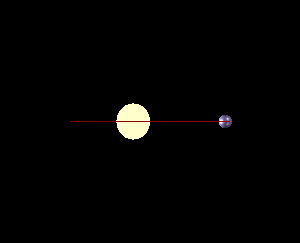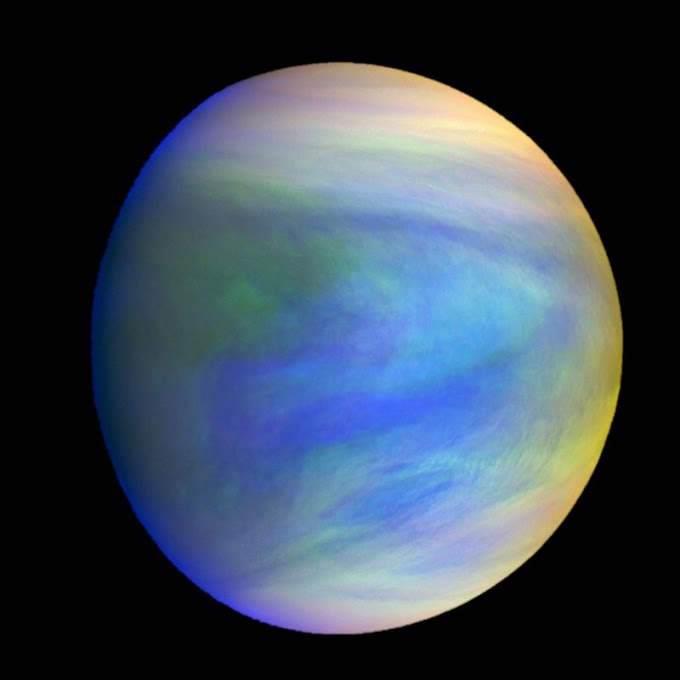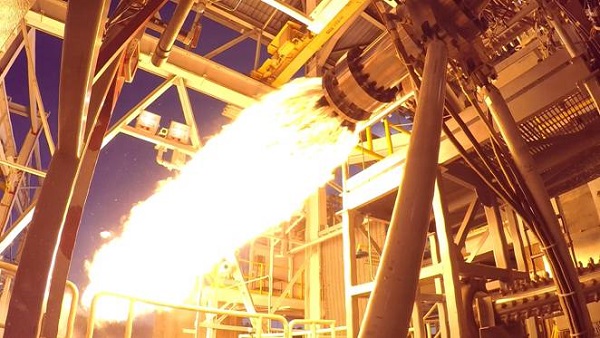 |
| An artistic view of the Jovian exoplanet GJ 504b. |
The disclosure of exoplanets is perhaps the best upset in current astronomy. Twenty years back, we had no clue about whether any of the incalculable stars out there past our nearby planetary group had planets or not. Today, things are very surprising. More than 1,000 planetary frameworks have been found. The universe is overflowing with planets. What's more, what bizarre planets they are - hot Jupiter-like planets skimming the surfaces of their stars, cold and forlorn free-gliding planets a long way from any star, planets made of jewel, planets with downpour made of glass, super-Earths and even planets circling neutron stars.
What is an Exoplanet?
The entirety of the planets in our nearby planetary group circle around the Sun. Planets that circle around different stars are called exoplanets. Exoplanets are exceptionally difficult to see straightforwardly with telescopes. They are covered up by the splendid glare of the stars they orbit. So, cosmologists utilize alternate approaches to distinguish and consider these inaccessible planets. They look for exoplanets by taking a gander at the impacts these planets have on the stars they circle.
 |
| An artist's representation of Kepler-11, a small, cool star around which six planets orbit. |
Finding Exoplanets
Finding exoplanets is troublesome work. Given the difficulties, unfortunately we've discovered any whatsoever. However, space experts are shrewd, so there are presently in excess of 4,300 affirmed exoplanets. They range from little Mercury-sized universes to planets bigger than Jupiter, yet a large portion of them make them thing in like manner: they circle near their home star.This isn't on the grounds that most planets circle near their stars, yet that our perceptions have a predisposition toward close-circling planets.
 |
| An orbiting planet (small blue ball) causes a star (large yellow ball) to orbit slightly off-center. |
Transit Method
The most well-known approach to find exoplanets is known as the transit strategy. This is where a planet passes before our view of a star, making the star faint somewhat. It's a straightforward thought on a basic level, however practically speaking it's troublesome. Stars change in splendor without anyone else because of things, for example, flares and starspots. To affirm a planet, you need to see a common example in the manner a star darkens, and that implies you need to notice a few travels of a planet. On the off chance that a planet orbits the star like clockwork or months, at that point you can affirm a planet decently fast. In any case, if a planet circles a star each couple of years, it could require 10 years or a greater amount of perceptions certainly.
 |
The observed flicker of a star during the transit of an exoplanet. Credit: EPIC
|
Indeed, even with this predisposition, we've taken in an extraordinary arrangement about planetary frameworks. We know there are "hot Jupiters" that circle near their stars surprisingly fast, and carbon universes that would appear to be extremely unique from Earth. We likewise now realize that our nearby planetary group with its rough internal planets and vaporous external planets isn't common for most star frameworks. In any case, there is little we think about planets with circles that are a year or more. In any case, that is beginning to change, as found in a new paper.
Kepler Mission
The vast majority of the exoplanets we are aware of were found by the Kepler mission. While Kepler found a couple exoplanets with orbital periods longer than 100 days, they are more hard to affirm. Additionally, since the travel technique just reveals to us the size of a planet comparative with its star, the Kepler information doesn't allow us to decide a planet's mass. This is especially inconvenient for Jupiter-sized planets. Since the heaviness of a huge planet makes it pack more, a Jupiter-mass planet and an earthy colored bantam multiple times more monstrous can have generally a similar size. Deciding the mass of these exoplanets is the objective of the Giant Outer Transiting Exoplanet Mass Survey, or the GOT'EM Survey for short.
 |
| Artist's rendition of the Kepler spacecraft |
Radial- Velocity Method
In this most recent work, the group utilized an alternate method to consider exoplanets known as the radial-velocity strategy. As a planet circles its star, it pulls on the star gravitationally, making the star wobble marginally. At the point when a star wobbles toward and away from us, the light of the star is moved to a spot to the blue and red in a normal example because of the Doppler effect. This technique is especially helpful for huge planets, and it very well may be utilized to gauge a planet's mass since the measure of wobble relies upon the mass of the planet.
 |
| The relative velocity measure of Kepler-1514. Credit: Dalba, Paul A., et al |
The group zeroed in on an exoplanet known as Kepler-1514b, which circles its star like clockwork. It was found in 2016, and is known to have a distance across about 10% bigger than Jupiter. Utilizing one of the Keck Observatory telescopes in Hawaii, they made outspread speed estimations of the star Kepler-1514 and decided the exoplanet has a mass of about 5.3 Jupiters.












0 Comments